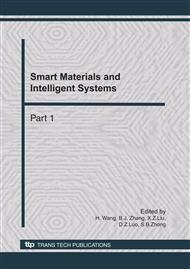p.32
p.38
p.43
p.48
p.53
p.62
p.67
p.72
p.77
Chattering Reduction of Sliding Mode Control by Adopting Nonlinear Saturation Function
Abstract:
This paper proposes a simple method dealing with chattering phenomenon of sliding mode control. Instead of using a linear function to smooth the discontinuous control when the system is within the boundary layer, the controller adopts a smooth nonlinear function which we call a nonlinear saturation function (nsat function). Compared with the conventional linear saturation function (sat function), the nsat function can be constructed arbitrarily and shall satisfy eight conditions. Seven of the conditions are used to get a better effect in reducing chattering and one is used to keep a fast response performance by adjusting one constant parameter . As the nsat function can be specified by , it can be calculated in advance; this makes the nsat function of high computation efficiency and makes it acceptable in real time control systems. One candidate nsat function is constructed by adopting a hyperbolic tangent function and it is adopted in the simulations running on a second order system. Simulation results show that the nsat function also results in a smaller tracking error.
Info:
Periodical:
Pages:
53-61
Citation:
Online since:
October 2010
Authors:
Price:
Сopyright:
© 2011 Trans Tech Publications Ltd. All Rights Reserved
Share:
Citation:


